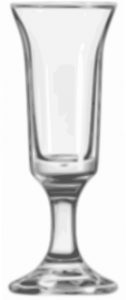In medieval times, herbs and spices were soaked in wine, and the wine then distilled into brandy to make medicine referred to as “cordial”. As enactors interested in alcoholic beverages, we’d love to get as close to this as possible, but close just isn’t very possible. Federal law is very explicit:
 Basic Permit Requirements under the Federal Alcohol Administration Act, Nonindustrial use of Distilled Spirits and Wine, Bulk Sales and Bottling of Distilled Spirits
Basic Permit Requirements under the Federal Alcohol Administration Act, Nonindustrial use of Distilled Spirits and Wine, Bulk Sales and Bottling of Distilled Spirits
Title 27 > Chapter 1 >Subchapter A >Part 19 >Subpart C Restrictions on Production, Location, and Use of (Production) Plants
§19.51 Home production of distilled spirits prohibited.
A person may not produce distilled spirits at home for personal use. Except as otherwise provided by law, distilled spirits may only be produced by a distilled spirits plant registered with TTB under the provisions of 26 U.S.C. 5171. All distilled spirits produced in the United States are subject to the tax imposed by 26 U.S.C. 5001.
(26 U.S.C. 5001, 5601, and 5602)
Accesssed 8/29/2014 from the Electronic Code of Federal Regulations – Title 27: Alcohol, Tobacco Products and Firearms
You can’t get much plainer than that.
Sorcha here: Right, so what do we do in our never-ending quest to reproduce the truly medieval fermented beverage? For cordials, the closest we can come:
a) We generally recommend finding white brandy and using it as a base, and adding the laundry list of herbs and spices to it. White brandy is very inexpensive, and doesn’t have flavorings, oak conditioning, or faux-oaking added. Christian Brothers White Frost is a pretty reliable brand. Made this way, your cordial almost certainly does not taste the same as the original recipe, but flavor wasn’t the point anyway, and this way the ATF doesn’t come knocking.
b) Some recipes just call for herb-soaked wine. If the recipe says anything about what kind of wine to start with, try to find the closest modern wine you can. For instance, if the recipe calls for Gascoigne wine, that comes from Gascony, a region in France. Remember however that in the eighteenth century the phylloxera blight killed a lot of grapevines across Europe, and people were spreading cuttings as far and wide as they could to save the grape variety. Now, a grape grown in France will not taste the same as the same grape grown in California, so it’s nice to find wine grown in the same place the recipe mentions, but that may not be possible. (Gascony does still grow the same grapes – they were some of the lucky ones to escape the blight.)